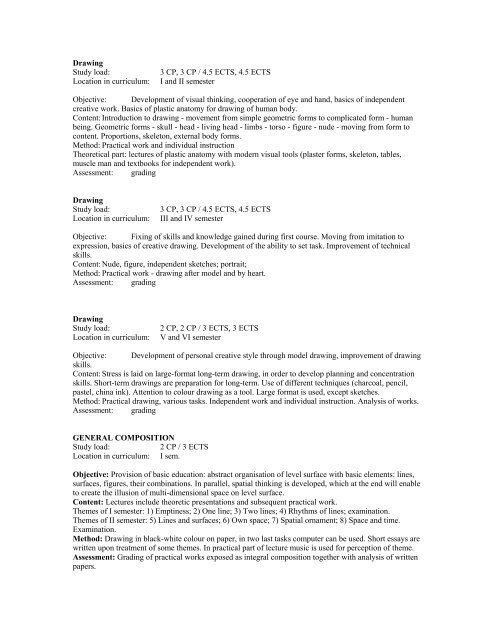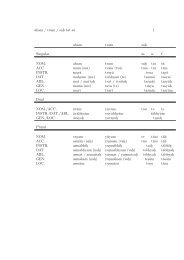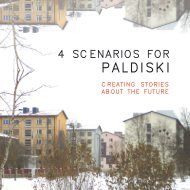Fine Art - Eesti Kunstiakadeemia / Estonian Academy of Arts
Fine Art - Eesti Kunstiakadeemia / Estonian Academy of Arts
Fine Art - Eesti Kunstiakadeemia / Estonian Academy of Arts
Create successful ePaper yourself
Turn your PDF publications into a flip-book with our unique Google optimized e-Paper software.
Drawing<br />
Study load: 3 CP, 3 CP / 4.5 ECTS, 4.5 ECTS<br />
Location in curriculum: I and II semester<br />
Objective: Development <strong>of</strong> visual thinking, cooperation <strong>of</strong> eye and hand, basics <strong>of</strong> independent<br />
creative work. Basics <strong>of</strong> plastic anatomy for drawing <strong>of</strong> human body.<br />
Content: Introduction to drawing - movement from simple geometric forms to complicated form - human<br />
being. Geometric forms - skull - head - living head - limbs - torso - figure - nude - moving from form to<br />
content. Proportions, skeleton, external body forms.<br />
Method: Practical work and individual instruction<br />
Theoretical part: lectures <strong>of</strong> plastic anatomy with modern visual tools (plaster forms, skeleton, tables,<br />
muscle man and textbooks for independent work).<br />
Assessment: grading<br />
Drawing<br />
Study load: 3 CP, 3 CP / 4.5 ECTS, 4.5 ECTS<br />
Location in curriculum: III and IV semester<br />
Objective: Fixing <strong>of</strong> skills and knowledge gained during first course. Moving from imitation to<br />
expression, basics <strong>of</strong> creative drawing. Development <strong>of</strong> the ability to set task. Improvement <strong>of</strong> technical<br />
skills.<br />
Content: Nude, figure, independent sketches; portrait;<br />
Method: Practical work - drawing after model and by heart.<br />
Assessment: grading<br />
Drawing<br />
Study load: 2 CP, 2 CP / 3 ECTS, 3 ECTS<br />
Location in curriculum: V and VI semester<br />
Objective: Development <strong>of</strong> personal creative style through model drawing, improvement <strong>of</strong> drawing<br />
skills.<br />
Content: Stress is laid on large-format long-term drawing, in order to develop planning and concentration<br />
skills. Short-term drawings are preparation for long-term. Use <strong>of</strong> different techniques (charcoal, pencil,<br />
pastel, china ink). Attention to colour drawing as a tool. Large format is used, except sketches.<br />
Method: Practical drawing, various tasks. Independent work and individual instruction. Analysis <strong>of</strong> works.<br />
Assessment: grading<br />
GENERAL COMPOSITION<br />
Study load: 2 CP / 3 ECTS<br />
Location in curriculum: I sem.<br />
Objective: Provision <strong>of</strong> basic education: abstract organisation <strong>of</strong> level surface with basic elements: lines,<br />
surfaces, figures, their combinations. In parallel, spatial thinking is developed, which at the end will enable<br />
to create the illusion <strong>of</strong> multi-dimensional space on level surface.<br />
Content: Lectures include theoretic presentations and subsequent practical work.<br />
Themes <strong>of</strong> I semester: 1) Emptiness; 2) One line; 3) Two lines; 4) Rhythms <strong>of</strong> lines; examination.<br />
Themes <strong>of</strong> II semester: 5) Lines and surfaces; 6) Own space; 7) Spatial ornament; 8) Space and time.<br />
Examination.<br />
Method: Drawing in black-white colour on paper, in two last tasks computer can be used. Short essays are<br />
written upon treatment <strong>of</strong> some themes. In practical part <strong>of</strong> lecture music is used for perception <strong>of</strong> theme.<br />
Assessment: Grading <strong>of</strong> practical works exposed as integral composition together with analysis <strong>of</strong> written<br />
papers.






